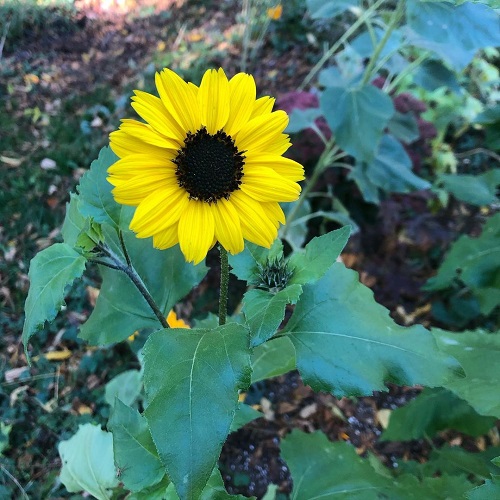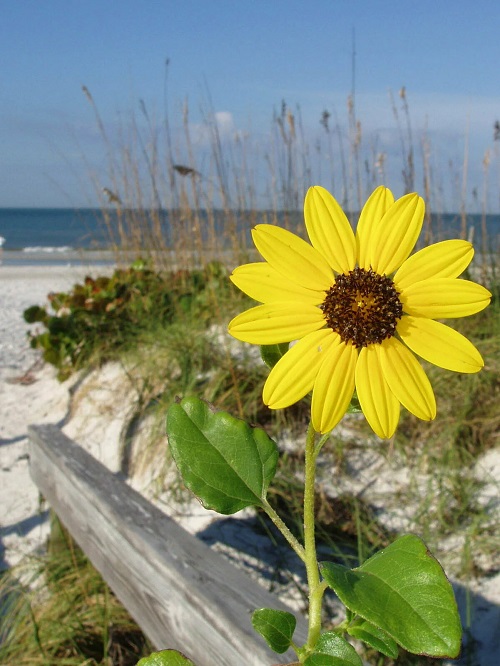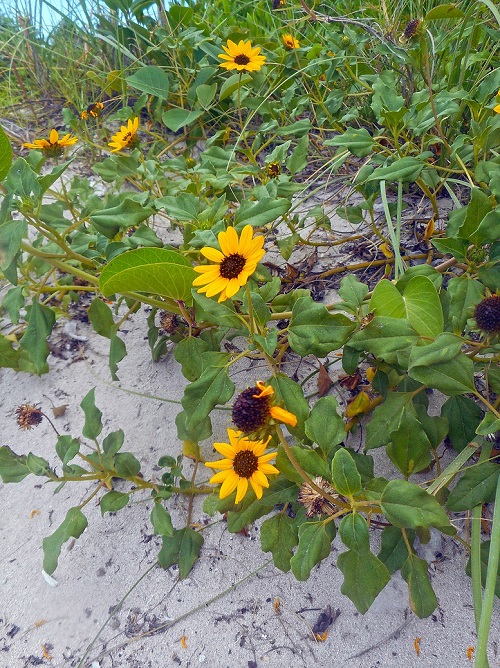Read about the essential tips and techniques for Beach Sunflower Care and create a stunning display of these pretty blooms in your garden!
Beach sunflowers can be a stunning addition to any garden or landscape. These vibrant, yellow flowers are popular for their hardiness and ability to thrive in hot and dry conditions. In this guide, we will explore the essential tips and techniques for proper Helianthus debilis care.
Botanical Name: Helianthus debilis
Common Names: Dune Sunflower, Beach Sunflower, Cucumberleaf Sunflower
USDA Zones: 8-11
Learn 18 Amazing Things to Do with Petunias here
Beach Sunflower Plant Information
Beach Sunflower (Helianthus debilis) belongs to the Asteraceae family, also known as the Aster, Daisy, or Composite family. It is native to the counties along the east coast.
However, there are two subspecies of the plant, namely cucumber leaf dune sunflower (H. debilis subsp. cucumerifolius), which is indigenous to scattered counties throughout the Panhandle and a few peninsular counties, and west coast dune sunflower (H. debilis subsp. vestitus), which is endemic only to Pinellas, Hillsborough, Manatee, Sarasota, Charlotte, and Lee counties.
Here are the Best Red Sunflower Varieties
Also famous as a dune or beach sunflower, it is a coastal plant that can also thrive inland. It typically blooms during the summer, but in South Florida, it may flower throughout the year.
Beach Sunflower produces yellow daisy-like flowers with brownish-red disk florets surrounded by bright yellow ray florets. The leaves are deltoid-shaped with rough surfaces and toothed margins, and they are arranged alternately.
One of the unique characteristics of Beach Sunflowers is their ability to attract wildlife. Its flowers are attractive to several species of butterflies, while its fruits serve as a source of food for birds. Besides, the flowers can be cut off and used for indoor decoration.
Check out 18 Stunning Flowers That Look Like Sunflowers here
Propagating Beach Sunflower

You can propagate beach sunflowers from both seeds and cuttings.
From Cuttings
- To propagate a beach sunflower through cuttings, cut a 2 to 4-inch-long mature stem that has not bloomed.
- Remove the lowest set of leaves to expose the growth nodes.
- Insert the stem into the prepared soil so that the growth nodes are covered.
- Place the container with the stem in an area with bright but indirect sunlight.
- Cover it with clear plastic, securing it with a wooden stake to prevent it from touching the stem, to maintain moisture.
- Mist the stem daily until it develops roots.
Here are Stunning Flowers That Look Like Sunflowers
From Seeds
- To start growing Beach sunflowers, plant one or two seeds about 1 inch deep in each pot filled with clean compost.
- Once the seedlings have developed their second set of true leaves, divide them and transfer them to separate pots from promoting better growth.
- Ensure to water the seedlings well and monitor their growth as they develop into mature plants.
Requirements for Growing Beach Sunflowers

Sunlight
Beach sunflowers require full sun to thrive, so ensure they get a minimum of 4-5 hours of direct sunlight every day.
Do not keep them in the shade, as it will result in little to no flowers. Also, if you live in a warmer zone, keep them safe from prolonged exposure to the harsh afternoon sun.
Soil
Beach sunflowers are native to sandy beach environments, so they thrive in soil that’s somewhat sandy. In their natural habitat, they can often be found growing on sand dunes.
To ensure good drainage, consider amending the soil with organic matter such as compost, peat moss, or perlite.
Learn How to Check the Soil pH at Home here
Before planting, work a 2-inch layer of organic matter into the top 8 inches of soil. This will help improve drainage, aeration, and nutrient availability. Also, a pH between 6.0 and 8.0 is the best.
Water
Regular watering is necessary to keep the soil consistently moist but not saturated. Water the growing medium until it is moist to a depth of 6 inches.
To check the soil moisture, insert your finger into the soil to the first knuckle. If the soil feels dry, it is time to water.
Here are the best ways to water plants
In most cases, beach sunflowers must be watered every 3-4 days during the summer growing season. During periods of drought, additional watering may be necessary.
Beach Sunflower Care

Fertilizer
The best fertilizer for growing beach sunflowers is a slow-release, balanced feed with a ratio of 10-10-10. Apply the fertilizer during the early spring and then again in mid-summer.
You can also dilute it to 1/4 of its strength and use it every 4-5 weeks.
Ensure to water the plants deeply after applying fertilizer to help the nutrients reach the roots.
Here are the Best DIY Potassium Fertilizer Recipes
Deadheading and Pruning
Deadheading beach sunflowers after the blooms die is a common practice to encourage continued bloom production and maintain the plant’s appearance.
While beach sunflowers generally do not require frequent trimming, occasional pruning may be necessary to keep the plant from becoming too unruly. It is especially important to prune the plant in the spring.
To encourage new, full growth, prune them in late March or early April.
Pests and Diseases
There is no serious pests or disease problem with beach sunflowers, but be vigilant for garden pests, such as slugs, particularly in the presence of mulch around the plant. Clear away any plant debris in the vicinity and trim off any withered flowers.
To keep most diseases at bay, avoid overwatering the plant and make sure it gets plenty of sunlight.



